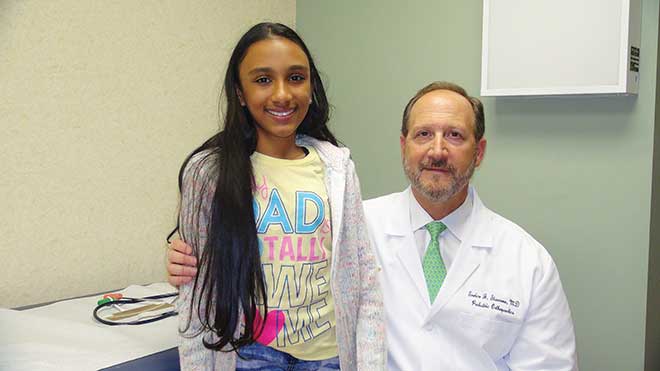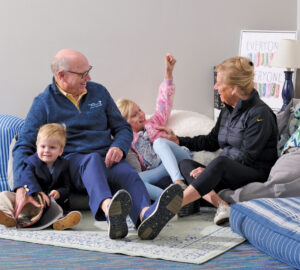The water isn’t clean, the equipment is old, there are no sheets or pillows on the beds. Hardly ideal conditions for a hospital, especially one where children need delicate and dangerous spine surgery. “It’s like going back 100 years,” says Dr. Madelyn Stazzone about pediatric treatment for the poor in the Dominican Republic. Stazzone is president and executive director of Pediatric Orthopedic Project (POP), which treats scoliosis (spine curvature) and other orthopedic problems in children in the  Caribbean. Scoliosis is correctable, but in extreme form, it can cause death due to impaired lung and heart function. Although precise figures for how many are affected aren’t known, the need in this small nation is great since the gene pool is smaller on an island, Stazzone explains, so genetic predisposition may be amplified.
Caribbean. Scoliosis is correctable, but in extreme form, it can cause death due to impaired lung and heart function. Although precise figures for how many are affected aren’t known, the need in this small nation is great since the gene pool is smaller on an island, Stazzone explains, so genetic predisposition may be amplified.
The doctor took her first trip there after learning of the urgency in 2012. Since then, she and husband Dr. Enrico Stazzone—a pediatric orthopedic surgeon at Mid-County Orthopaedic Surgery & Sports Medicine—and a 17-strong team of healthcare professionals (ICU doctors and nurses, nurse practitioners, physicians and technologists) have made the pilgrimage regularly.
Going for a week once a year (more recently twice), they have carried out 41 free operations, trained local doctors, and provided the hospital with essential supplies. These include antibacterial soaps, instruments, wheelchairs and crutches, and the metal rod implants donated by DePuy Synthes Spine. “If we were performing these surgeries in the U.S., each one would cost $80,000,” Stazzone says. She notes that a recent collaboration with another organization, World Pediatric Project (WPP), brought patient Lisbeth García to the U.S. for treatment she otherwise would not have received.
Under the best of circumstances, Dominican hospitals for the poor can be rudimentary, and health care generally is hard to come by. As an example, the children’s hospital in Santiago serves a geographical area of 500,000 people with, at most, six operating rooms, Stazzone says. Inhabitants of very rural, unrelentingly poor areas (called bateys) may never see a doctor in their lifetime.
To add to the difficulties, POP often has to wrestle the Dominican government (hospitals are state-run), to garner any supplies it doesn’t bring. “There is no money there,” Stazzone says, citing hospitals’ lack of technology, medication and even food, which families have to supply. Nursing care is scarce, she says, and mothers often are the primary caretakers during the inpatient postoperative period. “They sleep beside their children in the bed,” Stazzone says. “It is hard to see.” The largest measure of POP’s success, Stazzone says, is that the Dominican doctors it has trained over the years have treated 62 impoverished patients without her team present.
On Oct. 14, POP hosts its third annual Caribbean Gala at Grand Hall on Chouteau. All money raised will fund team travel expenses, supplies and ‘beautification’ projects. “We always like to give a little love to the hospital,” Stazzone says, referring to the bright refurbishments POP has overseen. One year, it provided 18 ceiling fans and completely rehabbed a surgical waiting room. Last year, it donated operating room lights and shelving, and outfitted a special ‘casting room’ for setting bones. “POP has been transformative,” she says.
Pediatric Orthopedic Project hosts its third annual Caribbean Gala Oct. 14 at Grand Hall on Chouteau. Pictured on the cover: POP nurse Elizabeth Seebeck; patient Lisbeth Garcia; WPP U.S. Referrals Program Director Natalia Rosales; and POP physician Dr. Phineas Oren. For more information, call 314.315.6102 or visit popstl.org.
Featured image: Dr. Enrico Stazzone with scoliosis patient Lisbeth García from the Dominican Republic; Photo: Katie Kormann
Cover design: Jon Fogel
Cover photo: Colin Miller of Strauss Peyton Photography








